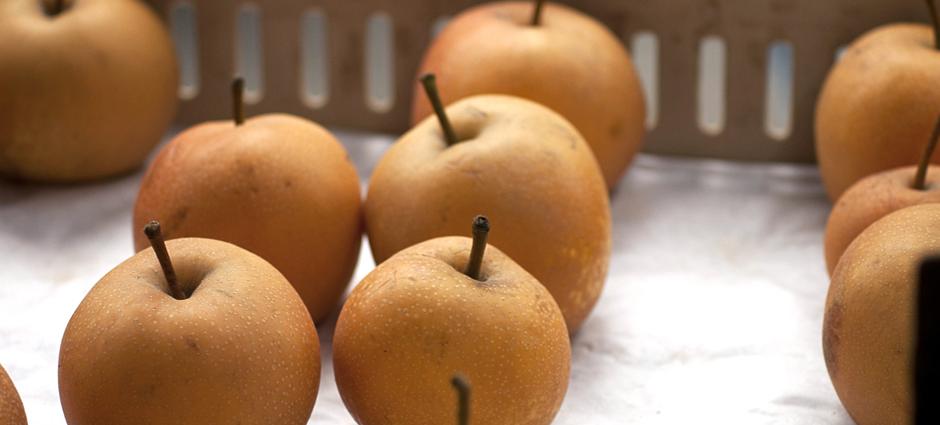Asian Pears - A Taste of Fall
Stroll through the farmers’ market in the fall and you’re sure to find a muted yellow, or light brown round fruit. At first glance, it looks like an apple, but upon further investigation, the texture of the skin sets it apart. While this fruit resembles their fall fruit colleague the apple, this is the tasty and interesting Asian pear.
Asian pears are comprised of a large group of pears that are crisp in texture and, when mature, are good to eat as soon as harvested. They do not change texture after picking as do other pears such as Bartlett or Comice. They are sometimes called apple pears because they have a crisp texture. These pears are the best when they come from the farmers’ market because you know they are grown by the farmer who brought them, they’re locally grown, and their flavor is at its peak.
Asian pears are native to Japan and China and have been cultivated for over 3,000 years. They first appeared in the US in the 1820s when the Chinese sand pear was imported to New York. In the 1850s, Asian pears came to California When the Chinese and Japanese immigrants relocated to California for the Gold Rush.
Asian pears are suited for both raw and cooked applications, including baking, steaming, and poaching. Try some of these delicious ideas for using this interesting fruit.
- Pear and goat cheese salads.
- Canned pickled pears or pear halves in light syrup.
- Garnishes in fall ciders.
- Baked with brown sugar and nuts.
- Sliced for appetizers or a charcuterie board with cheese and other fruit.
- Wine poached pears with cloves.
- Dehydrated pear and cinnamon chips.

